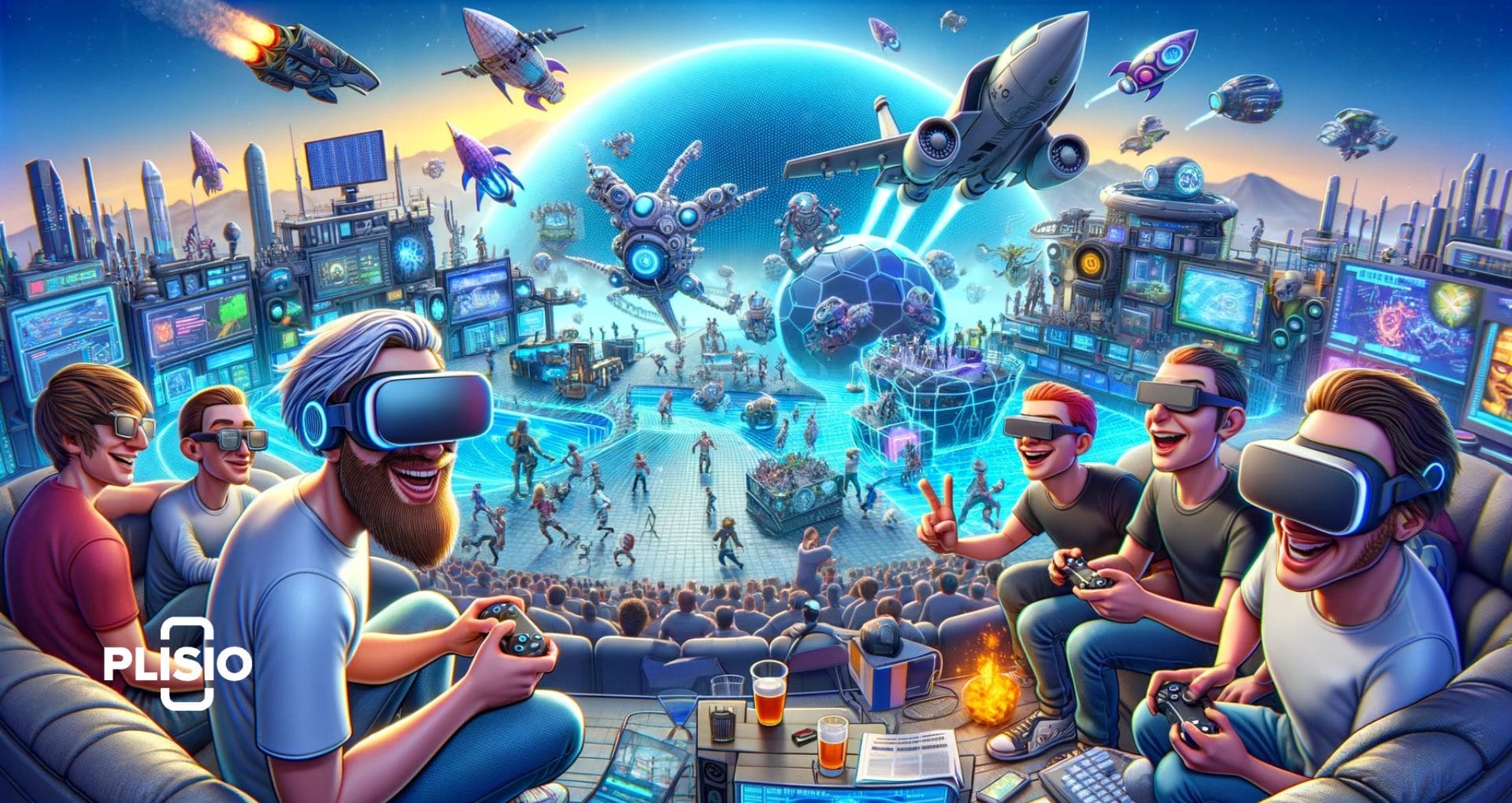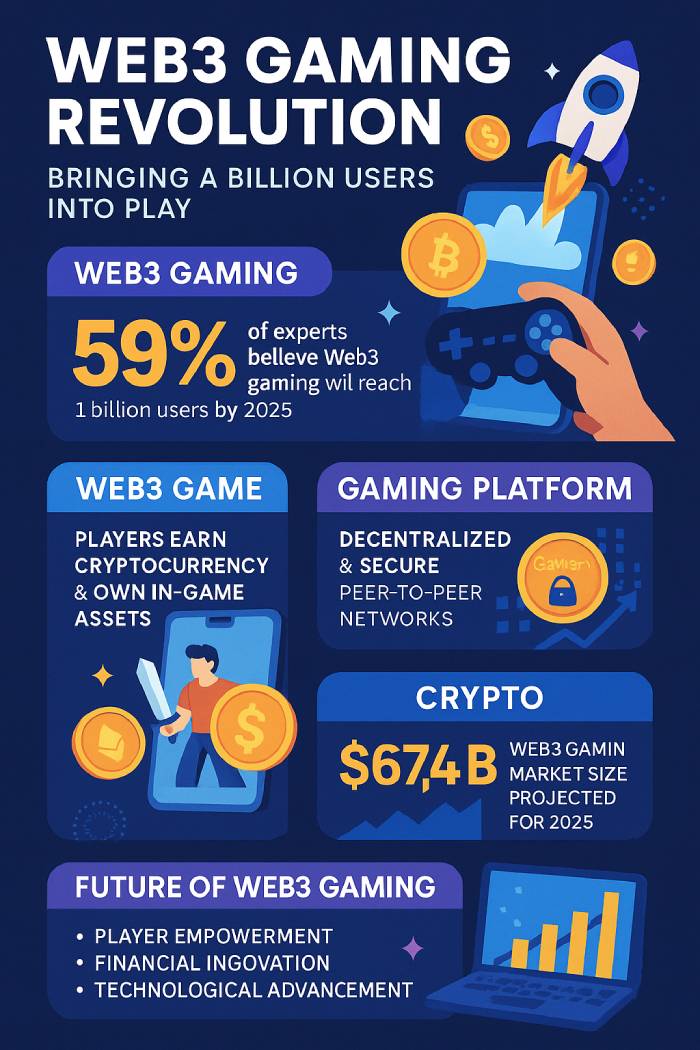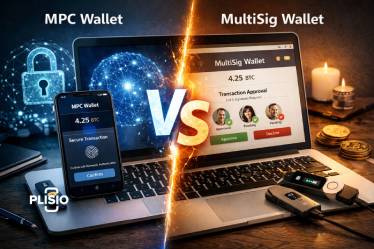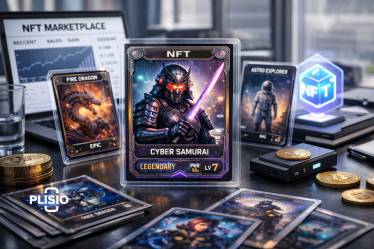Web3 Gaming Revolution: Bringing a Billion Users into Play

Web3 has impacted a lot of things, but the gaming sector is one of the most affected. This new generation of technology is redefining how people play games. Instead of using traditional gaming platforms, they are going toward a more decentralized, player-driven approach. Web3 gaming is distinct from normal gaming since it uses new ways to engage with games to make them more immersive. People can now generate money by playing games with cryptocurrencies and NFTs. This makes gaming easier to get into and provides individuals more power than centralized authorities.
In classic video games, players often had to buy stuff in the game or acquire digital assets by playing the game. Players pay for these digital products, but they don't truly own them. They merely have a license to use them in the game. Blockchain technology makes it such that players genuinely own their in-game assets in Web3 games.
Game administrators are in charge of the servers that hold all of the game data on centralized gaming platforms. Cyberattacks often target these systems, and the way traditional gaming works doesn't do a good job of keeping digital assets safe from theft, fraud, or loss. This inefficiency has caused gray markets to form, which are full with risks from hackers and scammers that cost both players and creators in the end.
By encouraging decentralized game experiences, Web3 gaming immediately fixes these problems. It brings in decentralized gaming ecosystems, including Gaming DAOs (Decentralized Autonomous Organizations), which make the area safer and more open. Web3 games leverage blockchain technology to make sure that players really own the goods in the game. People play games and make money in a new way with the play-to-earn approach. By adding metaverse gaming and crypto-secured game wallets, Web3 is making gaming communities safer, more profitable, and more focused on participants. This change in the gaming business is bringing in a new group of players and developers that want to see what a decentralized gaming environment can do.
What is Web3 Gaming and How Does It Differ from Web2 Gaming?
Web3 gaming is a game-changing idea in the gaming industry. It marks a change from Web2 gaming to a decentralized, tech-driven approach. Blockchain gaming is a new field that uses distributed ledger technology to make game asset management more open, safe, and free for players.
The main idea behind Web3 gaming is to make game ecosystems and platforms less centralized. This decentralization gives users control over their gaming assets and the decisions that affect them, rather than letting central authorities do it. Web3 games use blockchain technology to give players more control over how games are made and how they change over time. These games use cryptocurrencies and NFTs, which means that players can really own, trade, and move goods in the game without needing help from anybody else. Smart contracts govern assets in decentralized marketplaces, giving people a new way to become involved and make money.
The gaming industry, which is typically at the front edge of new technology, is now looking into how the Metaverse, NFTs, and blockchain technology could be used in Web3 gaming. This isn't simply a step forward in gaming technology; it's a whole new way to play games in the new gaming landscape. Blockchain technology is changing the gaming world by focusing on decentralization, security, and tokenization. This gives players and developers new options and benefits that have never been seen before.
Fresh Data in the Web3 Gaming Market 2025
According to DappRadar, the Web3 gaming sector recorded significant growth in unique active wallets, showcasing the rise of web3 gaming projects.5.8 million unique active wallets in the web3 gaming industry highlight the growing interest in decentralized gaming experiences.in Q1 2025, showing a slight decline of 6% compared to the previous quarter. By Q2, activity dropped further by17% of the gaming industry is now focused on integrating web3 technologies., while investments in Web3 gaming plunged by93% year-on-year, totaling just $73 million in the blockchain gaming space. Despite this turbulence, the market size is still projected to be between$24.4 billion and $37.6 billion in 2025, reflecting the potential growth in the gaming world., depending on the research source related to the gaming industry. Long-term forecasts suggest the Web3 gaming market could reach significant milestones in the gaming industry.$125–130 billion by 2032–2034, driven by blockchain adoption, NFTs, and player-centric innovations.
Industry experts remain divided.Emma Zhao, an analyst at Blockchain Research Lab, notes: the importance of interoperability among various gaming ecosystems in the web3 gaming community.“The short-term contraction we’re seeing is not a death knell but a recalibration. As speculative projects fade, the market is consolidating around sustainable models and studios that focus on gameplay.”
Meanwhile,Carlos Mendes, CEO of a European gaming startup, emphasizes the cultural shift:“Gamers want more than just profits. Fun has to come first in the evolving landscape of the web3 gaming world. Studios that design Web3 games with engaging narratives and fair mechanics will lead the next wave.”
Finally, the integration of web3 technologies can enhance player engagement.Sarah Lee, partner at a venture capital firm investing in GameFi, highlights the long-term opportunity in blockchain-based gaming:“The numbers show volatility, but the fundamentals are strong. We expect massive growth over the next decade as infrastructure improves and traditional gaming giants experiment with blockchain.”

Key Features of Web3 Gaming Platforms
Web3 gaming is changing the gaming world by combining important ideas like ownership, transparency, and player-driven experiences with new web3 game development tools. This new gaming model gives players full control over their in-game items, which are shown as unique NFTs and may be swapped for cryptocurrencies. This change not only gives players more control and decentralization, but it also makes sure that different gaming platforms can work together, which lets players move assets easily across games and improves the governance token model.
Ownership and Interoperability in Web3 Games
One of the most important things about Web3 gaming is that it focuses on real ownership, which is very important for the future of gaming. In traditional gaming, players' assets are only useful on one platform and lose their worth if they switch games. Web3 gaming, on the other hand, makes sure that these digital assets keep their value and usefulness across all platforms. Blockchain technology makes this possible by letting participants produce unique, non-fungible tokens (NFTs) that they really own and can sell on decentralized marketplaces.
Transparent Web3 Gaming Market
Web3 gaming is also different since it is very open and honest, which is important for the integrity of decentralized gaming. Blockchain technology makes sure that all transactions and data are saved safely and can be tracked by anybody. This makes the game fair for everyone. This openness goes all the way to the game's economy and asset tracking, making it easy to check where digital assets came from.
Player-Driven Web3 Gaming Development
Another big step forward is the player-driven experience in Web3 games. Games are becoming more and more personalized, with systems like play-to-earn (P2E) and walk-to-earn giving users money for playing. This not only keeps players interested, but it also gives developers additional ways to make money, which makes the gaming economy stronger and more diverse.
In-Game Economies and Components of Web3 Gaming
Web3 gaming also brings new in-game economies and digital scarcity, which will change the future of the web3 gaming community. Web3 gaming makes guarantee that in-game items are rare and keep their worth, unlike traditional gaming, where unique items can be copied, which causes inflation. Blockchain technology enforces this scarcity by keeping track of objects so that they can't be copied or changed. This gives real-world worth to in-game assets.
Old Game Integration with Web3 Gaming Platforms
The fact that earlier game models can be used in Web3 gaming platforms shows how flexible and adaptable this new method is. Web3 gaming not only keeps classic games alive, but it also makes them better by adding new technology and features that focus on the user.
Different Types of Web3 Games
Web3 gaming has diversified into various engaging models, notably play-to-earn and walk-to-earn, offering unique and immersive experiences for players within gaming communities. This evolution in the gaming ecosystem invites enthusiasts to explore these models and their distinctive features.
Play-to-Earn Web3 Games
The name "play-to-earn" (P2E) games says it all: users play to earn prizes, which can be NFTs or cryptocurrencies. This marks the start of a new era in gaming. This model makes gaming more participatory and fun. In this new era of gaming, players do different activities and compete in challenges to gain digital items as they move up in the game. You may then reinvest these assets in the game or sell them on digital marketplaces, which gives you a real return on your gaming investment.
P2E games are different from regular games since they use decentralized Web3 gaming platforms. This means that game producers no longer have a monopoly on the game's economy. This democratization lets users provide value to the gaming DAO environment, which helps both them and the developers. "Axie Infinity," "Splinterlands," "Alien Worlds," and "Silks" are some of the most popular P2E games. Players usually need to get some cryptocurrency in order to play, which lets them start earning digital assets through games in the process of decentralized gaming.
Walk-to-Earn Web3 Games
Walk-to-earn games are a new way to compensate players for doing simple things like walking. They integrate gaming with physical activity. This GameFi approach combines working out with collecting digital assets.
"STEPN," a groundbreaking lifestyle program in this field, gives users GST tokens for things like running, jogging, and walking. This has helped the popularity of gaming NFTs in the blockchain gaming area. You can use these tokens to buy things in the app or trade them on exchanges. "Walken," another well-known walk-to-earn site, combines sports, online gaming, and cryptocurrency. Users earn WLKN tokens for walking, which improves the future of web3 gaming. Walken is different from other fitness apps since it has competitive gaming, where players level up their characters and compete against one other. This makes the fitness model more exciting.
The play-to-earn and walk-to-earn models are big changes in the Web3 gaming sector. They combine fun with exercise and money-making opportunities, which are two important parts of gaming. They not only give you new methods to play games, but they also give you the chance to make money by doing fun things. As these models get better, they will probably appeal to more people. This will make it much harder to tell the difference between gaming, fitness, and making money in the web2 and web3 worlds. But anyone who want to play these games should know that they may need to invest in cryptocurrencies first.
Challenges in Web3 Gaming
The new world of Web3 gaming has a lot of potential, but it also has a lot of big problems that could affect the future of gaming.
One of the biggest worries in the Web3 gaming sector is the chance of an unbalanced economy, which might hurt various parts of gaming. In the web3 gaming industry, both players and creators have a big impact on how the game's economy works. But if the economy goes bad or goes through a crisis, web3 gaming could die. This shows how important it is for these games to have a balanced and long-lasting economic model.
Also, security and regulatory problems are big problems for web3 gaming projects. Cryptocurrencies, which are the basis of Web3 gaming, are decentralized, which means that there is a risk of scams and fraud even when smart contracts are in place. The FATF and SEC are two examples of regulatory groups that are trying to make things safer. This makes us wonder if Web3 gaming can do well with strict rules.
Another problem in the Web3 gaming world is the effect of hype, especially when it comes to how much cryptocurrencies and NFTs related to these games are worth. There have been times when the cost to get into some games, like Axie Infinity, went over the roof because of speculation, making them too expensive for most players. This shows how important it is to have ways to keep normal gamers safe from market manipulation by crypto-rich speculators in the web3 gaming sector.
Also, the Web3 gaming ecosystem is still new and has problems with getting people to utilize it and getting it accepted by the general public. Web3 is complicated, and there aren't many easy-to-use interfaces for gamers who aren't familiar with crypto. This might be a problem in the ever-changing world of gaming. Developers and gaming guilds need to teach people who might want to play Web3 games about the benefits of doing so.
Web3 games are also not safe from breaches and cyberattacks, even if they are constructed on decentralized networks that make them more secure. Because of this risk, gamers need to protect their private keys and use safe crypto wallets for their digital assets.
The "fun" part of gaming is an important part that is often at risk in the web3 gaming space. Web3 games may miss the most important part of what makes games fun if they focus too much on money. Web3 developers need to make sure that the fun and engagement of gameplay don't get lost in the economic aspects.
Lastly, the changing laws and rules around Web3 gaming creation make things even more complicated. There are still some problems with taxes, licenses, and anti-money laundering rules that need to be worked out. Developers and players both need to be careful as they deal with these unknowns.
Web3 gaming has new and exciting opportunities, but to reach its full potential and become widely used, it needs to be well thought out in terms of economic balance, security, regulatory compliance, user involvement, and the inherent fun of gaming.




